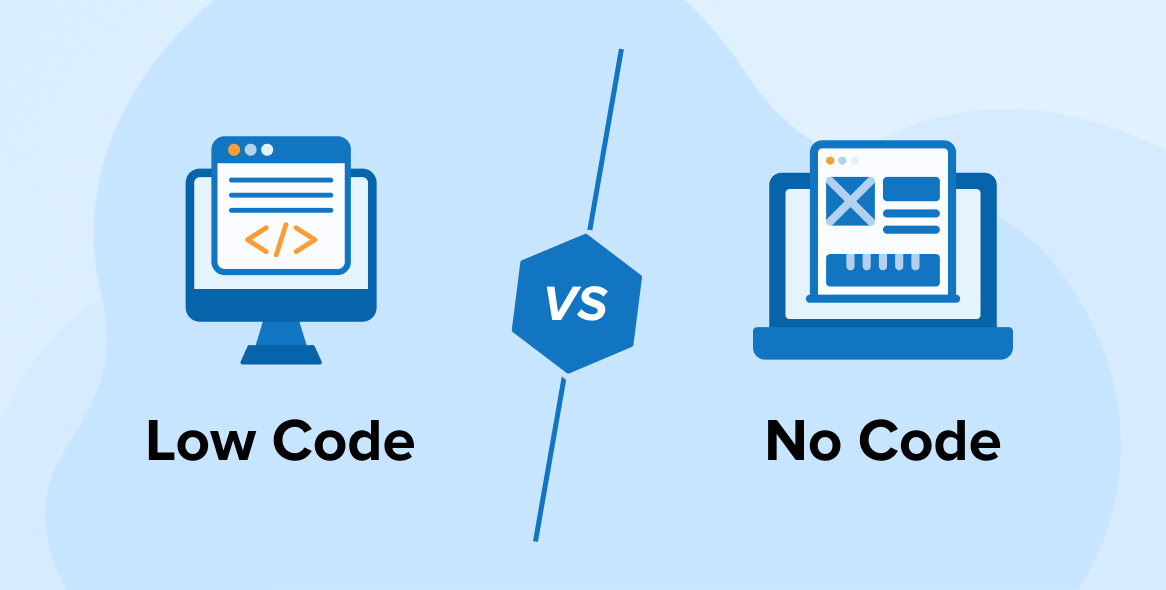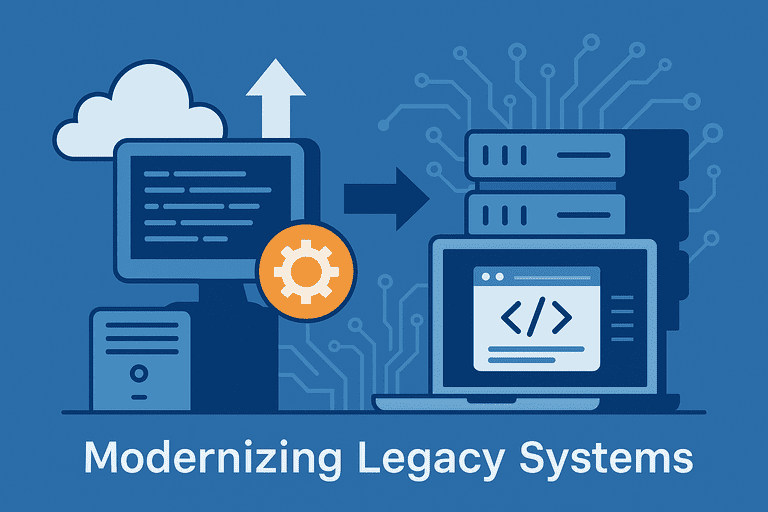Insurance processes that once took weeks can now be completed in minutes — a claim that used to involve piles of paperwork and endless reviews may be handled by an AI model in real time.
At TechVision, we see changes like this all the time in our insurance software development projects, which is why we keep a close eye on the trends shaping the industry. In this article, we explore the insurtech trends to watch in 2025, so let’s delve in.
Why InsurTech Trends Matter in 2025
During the initial discovery phase with new clients, we always walk them through the current trends so they can see how industry shifts affect their business today and what opportunities may open up tomorrow. We are often asked why trends matter, and sometimes face the objection that following them is just chasing buzzwords.
Well, trends don’t appear accidentally. They clearly show where the industry is heading. They help us understand which technologies are moving from experiment to everyday use, and what keeps insurance businesses competitive. In other words, looking at trends helps insurers make smarter decisions about where to invest. With this in mind, let’s take a closer look at the key innovations shaping insurance in 2025.
1. AI and Machine Learning in InsurTech Innovation
Insurance is one of the few industries that heavily rely on data and prediction, the very areas where AI excels. Insurers have always worked with vast amounts of information — medical records, accident statistics, weather data, financial histories, and more, but now machine learning makes it possible to process and interpret this data at a scale and speed that wasn’t achievable before.
In addition to running statistical models and processing financial records, AI can automate slow, paper-heavy processes, provide more precise forecasting, spot unusual claims that may signal fraud, and suggest policies tailored to individual policyholder needs.

As a result, customers get faster answers, fairer pricing, and a more personal experience; for insurers, it means operating with greater efficiency and staying competitive.
Therefore, it’s little surprise AI is so massively adopted by insurtech companies. According to McKinsey, as of July 2025, 70% of insurtech firms in the UK were already running AI pilot projects or moving further into adoption, and over 90% planned to use AI in their operations within the following 12 months.
How AI is transforming underwriting, servicing and forecasting
ML algorithms can process massive volumes of data in seconds, giving insurers a more accurate picture of risk. This significantly speeds up underwriting and reduces errors that come with manual assessment.
Claims servicing is another area where AI is successfully replacing manual work. Chatbots and virtual assistants can guide policyholders through claim submissions. They answer questions instantly and escalate complex cases to human agents when needed.
At the same time, predictive analytics goes a long way toward forecasting trends, for instance, rising claim volumes after severe weather events, giving insurers time to act proactively.
AI as a driver of UX innovations
AI is also changing the way customers experience insurance. Modern policyholders expect insurance apps to be as convenient and personalized as shopping apps, and AI is making that possible. AI-powered insurtech allows customers to receive personalized recommendations, manage policies through voice assistants, track claims, get proactive reminders or fraud alerts, and more.
Risks and limitations
It goes without saying that AI has an immense potential to disrupt the industry; still, it’s not a silver bullet on its own. The first thing to keep in mind when implementing AI is that algorithms work well as long as they are fed with high-quality data. Incomplete or biased data can lead to unfair outcomes, such as higher premiums for certain groups.
Not to mention, regulators are paying close attention to the use of AI in the insurance sector due to their concerns about transparency in automated decision-making and the protection of sensitive personal data. This means insurers can’t feed all available data into AI models; they must comply with privacy laws and demonstrate that their systems do not discriminate, which limits how much data they can actually use.
Finally, not every customer is ready to trust that an algorithm has fairly assessed their claim. Many policyholders still want a human involved when significant financial or personal decisions are made.
2. Predictive Analytics & Data Engineering
Insurance has always been a business of probabilities. However, in 2025, the way the probabilities are calculated is entirely different from what it used to be before. In addition to historical averages, predictive analytics now allows insurers to leverage real-time information to anticipate events, drawing data from weather services, connected cars, health devices, and even social platforms to build a more detailed view of risk.
Still, this is only possible with strong data engineering behind the scenes. Petabytes of information from dozens of sources in different formats are of little use unless the data is wrangled, that is, cleaned and structured. Data engineering tools, including ETL/ELT platforms, cloud data warehouses, and data lakes help collect, clean, and structure the information so that predictive models can actually work.

Thanks to predictive analytics, carriers are now able to forecast surges in claims after extreme weather, adjust premiums based on lifestyle or driving habits, and even anticipate which customers might cancel their policies. This translates to operating with fewer surprises, which helps insurance companies stay profitable and retain customer trust.
For example, high-cost events like hurricanes, floods, earthquakes, and pandemics generate a sudden surge of claims that can overwhelm insurers. Predictive analytics lets carriers prepare capital reserves and coordinate resources to process thousands of claims at once. Also, it allows insurers to estimate how much risk they’re taking on, so they don’t sell more policies than they can afford to cover.
3. IoT & Usage-Based Insurance (UBI)
With the IoT (Internet of Things), insurers no longer rely solely on historical records to judge risk — they can observe behavior and conditions in real time. In auto insurance, telematics boxes and smartphone apps track driving speed, braking patterns, cornering, mileage, and the time of day a car is on the road. As a result, safer drivers pay lower premiums, while riskier habits mean higher costs.
Likewise, health insurers start to adopt wearables that record activity levels, heart rate, blood pressure, sleep quality, and other signals, and reward healthier lifestyles with discounts. Home insurers, in turn, rely on smart sensors that detect water leaks or smoke, which can prevent costly claims before they happen.
4. GenAI Assistants: A New Frontier in InsurTech Trends
One of the strongest insurtech trends, generative AI is reshaping the way policyholders interact with insurers. Unlike traditional chatbots that merely follow scripts, modern AI assistants can understand context and thus handle complex queries.
How does it work? Let’s say a policyholder has just been in a car accident. They can describe the situation in plain language through a mobile app, and the AI assistant can guide them through submitting the claim, pre-fill most of the forms, and check for missing information.
On the insurer’s side, GenAI assistants can summarize long claim files for adjusters, suggest next steps in the review process, generate correspondence, and more, freeing staff from repetitive tasks. The result is a faster customer experience and more efficient internal workflows.
5. Low-Code/No-Code: Accelerating Innovation in Insurance
Low-code and no-code platforms allow for developing applications through drag-and-drop interfaces or pre-built modules and don’t require advanced coding skills. As in other industries, this means faster time-to-market for insurers and less reliance on inefficient legacy systems.

Addressing a widespread concern in advance, this speed doesn’t mean weaker security. Leading low-code and no-code tools come with built-in controls for data privacy, encryption, and compliance with frameworks such as GDPR and HIPAA. There is little doubt that this innovation in insurance is here to stay — according to a forecast published by Global Market Estimates, the low-code technology in the insurance market will grow at a CAGR of 17.4% from 2024 to 2029 globally.
6. Embedded Insurance
Embedded insurance is the integration of insurance coverage into the purchase of a product or service, offered at the point of sale. Instead of buying insurance separately, the customer gets it automatically or as an easy add-on during another transaction, like booking a flight that comes with a travel insurance option at checkout or ordering a new smartphone online with an extended warranty added in just one click.
While the concept itself isn’t new — airlines and retailers have been bundling insurance with purchases for decades — embedded insurance is gaining real traction in 2025, as digital platforms and APIs make it far easier to deliver coverage exactly when and where customers need it. For the latter, insurance that feels like part of the product translates to a level of convenience that wasn’t possible before.
Business-wise, this is a brilliant opportunity to enter a broader market. Partnerships with retailers, airlines, automakers, and digital platforms allow insurers to reach customers where they already are, removing the friction of a separate sales process.
7. Cloud-Native Platforms & Ecosystem Architecture
Cloud computing provides businesses with flexible storage and the ability to seamlessly integrate with third-party platforms, so it’s little wonder that switching to the cloud is one of the dominant trends in insurtech.
Cloud solutions enable insurers to scale capacity during spikes in demand and collaborate with fintechs or health providers in unprecedented ways. A good example is health insurers that integrate with telemedicine platforms in real time, or auto insurers that link directly with car manufacturers. From the customer’s perspective, the benefit is often invisible but important, such as smoother claims and services that feel less fragmented.
8. RegTech & Automated Compliance
Insurance is one of the most heavily regulated industries, and keeping up with requirements has traditionally involved large compliance teams and significant costs.
Regulatory technology, or regtech, is changing that by using automation and advanced data analytics to help insurers stay aligned with complex frameworks without compromising on efficiency. Regtech solutions can function as standalone apps that integrate with insurer systems, or as built-in modules within broader insurtech platforms, depending on the need.
These solutions have a broad range of applications in the insurance sector, spanning compliance monitoring and reporting, risk management, and data analytics. For example, AI-powered systems can scan transactions in real time to detect potential compliance issues before they escalate.
In 2025, regtech is a practical way to balance insurtech innovations with the non-negotiable requirement of staying within the rules.
9. AI-Augmented Risk Models & Climate-Aware Underwriting
Among the innovative trends in insurance, AI-augmented risk modeling is playing an increasingly important role. Risk models determine how likely an event is to happen and what financial impact it might have. Traditionally, they were based on historical records and relatively limited data sets. AI substantially expands the scope of data to be analyzed and accelerates the speed at which insights can be drawn. Today, insurers can feed models with satellite imagery, sensor data from connected homes and vehicles, live weather reports, etc., leading to more accurate predictions that help carriers adjust premiums or anticipate losses in near real time.
This innovation is truly game-changing in property and climate-related insurance. Relying only on the past data doesn’t work with natural disasters that are getting more severe and less predictable, which is where climate-aware underwriting comes in. For example, reinsurers use AI to combine decades of meteorological data with forward-looking climate models to assess coastal flooding risks.
Property insurers in California are already testing tools that map wildfire risk at the property level, as highlighted in a recent case study by the Insurance Information Institute. Such an approach lets insurers price coverage more responsibly and prepare capital reserves before catastrophic events strike.
AI-augmented models provide a clear business value to insurers: they reduce blind spots, improve capital planning, and build resilience.
10. Modernizing Legacy Systems
Many carriers still use outdated systems to manage policies, insurance claims, and billing. Although they perform their back-office functions, these platforms are difficult to update, expensive to maintain, and don’t align with the demands of modern customers. However, switching to new systems is costly and takes time. On top of that, insurance companies risk losing decades of data as well as major business disruption they can’t afford.
Many carriers take a phased approach, using cloud migration, APIs, and modular platforms to connect old and new systems. This lets them keep essential data intact while layering on new capabilities.

For example, our team designed, developed, and implemented a Service-Oriented Architecture (SOA) based web services layer for American Modern Insurance Group, Inc. Using existing web client applications, this layer enables seamless access to various repositories and allows staff members to complete transactions without needing to know the actual location of the document.
We also implemented Splunk, a system designed for searching, monitoring, and analyzing machine-generated data in real time, and Feng Office to help the company easily manage and track issues, requests, and tasks.
Challenges Slowing Down Innovation in the Insurance Industry
Like across other highly regulated and data-reliant industries, insurtech innovation often moves slowly. In this section, we’ve highlighted some of the major challenges that hinder digital transformation in insurance.
Legacy systems
As already mentioned, many insurance companies still operate on technology built decades ago. These systems are deeply embedded in daily operations, which makes them difficult to replace. Modernization requires years of work and significant investment, let alone the risk of disrupting core services.
Regulation
Insurance is one of the most tightly regulated industries in the world, with rules varying across regions and product lines. Complying with those frameworks calls for time and resources, and, consequently, the path from concept to adoption is slower than in less regulated industries.
Data challenges
Insurtech innovation depends on data, much of which might be scattered across silos, stored in outdated formats, or simply inconsistent. Preparing data for AI models is expensive and time-consuming.
Cultural resistance
Although valuable, the mindset of stability associated with the insurance sector can make decision makers cautious about new technology. Employees may also resist changes, especially if training is lacking or the advantages are not immediately visible.
How to Turn Trends into Action
Turning the latest trends into real business results requires strategy. Below are some of the key areas insurers should focus on to move from theory to execution.
Set your architectural priorities
Modernization can’t happen everywhere at once. Insurers need to decide which functions matter most in the short term, such as moving policy administration into the cloud or enabling data pipelines that support predictive analytics. A clear architectural roadmap gives IT teams and business leaders a shared vision of where investment should go first.
Build vs. buy: when to partner
Instead of developing new technology in-house, insurance companies can partner with insurtech startups and technology vendors to get access to tools they would struggle to build alone. However, some capabilities are too critical and thus should remain under the insurer’s control. For example, an insurer might partner with a fintech for payment solutions but choose to build its own AI-driven underwriting models.
Track ROI across innovation initiatives
Measuring ROI gives direct insight into whether innovation efforts are truly paying off. Beyond counting cost savings, insurers should also look at customer satisfaction and policyholder retention. These metrics can give businesses a better understanding of which initiatives deliver value and which fall short, helping them build a stronger case for innovation and ensure resources go to the right places.
Conclusion
They say trends come and go, but that’s not how it works with technology. What feels like a trend today quickly becomes an industry standard tomorrow — just think of mobile apps that are now taken for granted in insurance. That’s why it’s wise to research trends before building a product.
If you’re a startup planning to develop an insurtech product or an insurance business aiming to become more competitive and efficient, TechVision can help. We have extensive experience building solutions for heavily regulated and data-intensive sectors, including insurance. Feel free to book a call, and we’ll discuss how your organization can turn innovation in the insurance industry into measurable business results.






